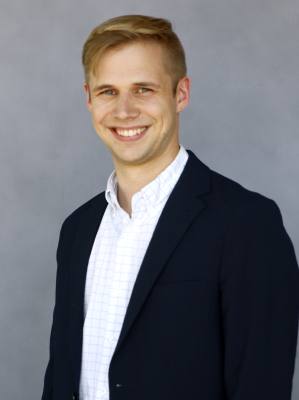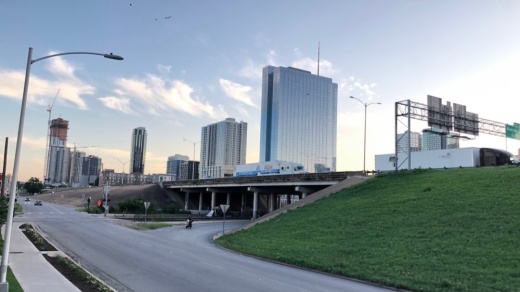According to a press release from the city of Austin, the plans are still “preliminary” and the surveys represent some of the first opportunities for public input. It also said the cap and stitch plans are based on recommendations from the Urban Land Institute.
A 2020 report by the Urban Land Institute proposed caps—large decks that would go over highways—running from East Caesar Chavez to East Fourth streets and East 11th to East 12th streets, as well as two caps between East Sixth Street and East Eighth Street.
The report also listed East Dean Keeton Street, Manor Road, East Martin Luther King Jr. Boulevard, East Fifth Street and River Street, as possible locations for stitches, which are widened bridges that could include protected bike and pedestrian paths.
The city has offered two surveys to get feedback on the proposals. The first asks for input on what to put on top of the caps and stitches. The second focuses on the project’s branding, asking for feedback on its naming and color scheme.
“Over the next few months, the city and Downtown Austin Alliance will continue working with TxDOT to confirm the feasible locations of the caps and stitches that will be built overtop the revised I-35,” said Kelly Buethe, senior public information specialist at the city’s corridor program office, in an email.
The two city of Austin surveys will be open for comment until Oct. 1, and the TxDOT survey will be open until Sept. 24.
Funding and other community efforts
TxDOT operates I-35 and is funding the $4.9 billion project from Hwy. 290 to Hwy. 71. The transportation agency has said it is willing to redesign the stretch of I-35 through downtown in a way that is compatible with the cap and stitch proposal but would not fund the implementation of such an initiative.
“It's been made very clear by our commission and our administration that several of the category funds that are available to us, specifically category 2, category 4 and [category] 12, which make up the bulk of the funding for this project cannot be used for the local enhancements, and it needs to be raised locally,” TxDOT's Austin District Engineer Tucker Ferguson said during an Austin City Council meeting Aug. 31.
Other community-led proposals, including Reconnect Austin and Rethink 35, have continued to oppose the TxDOT designs, in part because they would expand the highway to 20 lanes in some places and could displace over 140 properties.
“TxDOT is really trying to push this project through a whole lot faster. Every time we ask them to slow down a little bit, and let the community understand it, they say, 'We have a project to deliver, we don’t have time,' and that makes me nervous” said Heyden Black Walker, one of the Reconnect Austin founders.





